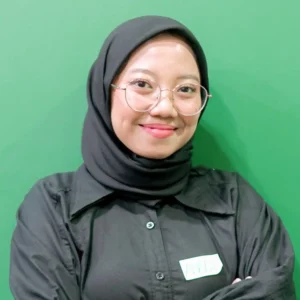Artikel Ini Telah Direview Oleh:

Anggie Nur
Magister Bioteknologi
The emergence of diseases that attack the productivity of the shrimp digestive system is a serious problem for vannamei shrimp farmers. One of these diseases is White Feces Disease (WFD) or white feces in vannamei shrimp. WFD disease originates from various bacterial and parasitic pathogens. This disease affects shrimp growth, shrimp size, feed reduction, and can lead to chronic death.
You can detect WFD by means of histology tests, in situ hybridization, and PCR. Let's understand how to deal with white feces in vannamei shrimp!
Getting to Know White Feces Disease (WFD)
White Feces Disease (WFD) is a disease that attacks the shrimp digestive system. This disease is caused by the interaction between vibrio bacteria and parasites.
Vibrio bacteria found in WFD-infected shrimp and aquaculture water are Vibrio parahaemolyticus, Vibrio fluvialis, Vibrio alginolyticus, and Vibrio mimicus. In addition, there are several studies showing the existence of microsporidia parasites, especially Enterocytozoon hepatopenaei (EHP) and protozoa gregarin (genus Nematopsis). This causes the shrimp to emit pale white feces which indicates damage to the digestive tract. Shrimp manure that has been contaminated with WFD disease will float on the surface of the vaname shrimp pond.
Vibrio content in the faeces of shrimp affected by WFD will be very high. This indicates the presence of vibrio pathogens in the culture water and shrimp intestines. White feces disease often occurs 1-2 months after sowing the vannamei shrimp seeds and causes reduced feed intake and feed absorption in the vaname shrimp intestines.
Besides being seen from the shrimp intestine, white feces disease can also be seen from the shrimp hepatopancreas. The hepatopancreas is the main organ of the shrimp which is used in the metabolism of the digestive system to absorb nutrients, minerals, organic substances, and the catabolism of organic compounds. The hepatopancreas of vannamei shrimp infected with WFD will turn whitish and soft. In addition, most of the shrimp that were sick with WFD had a darker body color and were softer.
WFD has caused significant economic losses for shrimp farmers because it is the cause of high FCR, slow growth, and variable/non-uniform size of shrimp during harvest. Most of the shrimp harvested are of poor quality, such as having a soft and porous body. This happens because the shrimp meat shrinks due to the shrimp not eating, so the price of the shrimp harvested is low.
Symptoms of White Feces Disease in Shrimp
Observation of the symptoms of White Feces Disease in shrimp was carried out by looking at changes in vannamei shrimp after feeding. Changes to watch out for are:
- Appetite changes
- Discoloration of feces, intestines and shrimp hepatopancreas
- Movement state (active or not)
- Shrimp body color
- Shrimp carapace condition.
Shrimp affected by WFD disease can be seen from the white shrimp droppings, soft carapace, broken intestines, and dark gills. The severely affected ponds showed a reduction in shrimp survival of 20-30% when compared to normal ponds. The next impact is a decrease in feed consumption, a decrease in growth rates, and a decrease in average daily weight gain or Average Daily Growth (ADG).
How to Overcome WFD Disease in Shrimp
White feces disease affects the growth of shrimp directly, so that the shrimp will not grow optimally. As a result, many shrimp farmers experience crop failure due to this disease.
Preventive steps that can be taken before shrimp are exposed to white feces disease are implementing proactive management and biosecurity during the management of vannamei shrimp ponds.
How to deal with WFD disease in shrimp is as follows:
- Give probiotics such as Lactobacillus sp.
- Recirculate water
- Perform siphoning
- Maintain water brightness in the range of 35-40 cm
- Reduce feeding and prevent overfeeding
- Provide oral treatment with the addition of immunostimulants
- Give garlic in the form of dry garlic powder as much as 4 grams/kg of feed or fresh garlic at a dose of 10-15/kg of feed
- Giving probiotics, prebiotics, organic acids, and others in feed to reduce vibrio levels in the digestive tract
Atasi Berak Putih pada Udang dengan Konsultasi Budidaya di eFarm
Need Help Regarding Shrimp Cultivation Business?
Fill in your personal data in the following form. Our team will immediately contact you via the number cellphone attached. Make sure the data entered is correct.
Salah satu persoalan terbesar pada budidaya udang adalah serangan penyakit, seperti berak putih. Bapak/Ibu dapat mengatasi serangan berak putih ini dengan berkonsultasi bersama Ahli Budidaya melalui fitur Cultivation Consultation from eFarm.
There are many professional aquaculture experts and shrimp farmers who are ready to discuss with you in person online, sehingga Bapak/Ibu memiliki kesempatan untuk mendapatkan pendampingan FREE dalam mengelola budidaya udang.
Isi formulir di atas untuk konsultasi FREE in Cultivation Consultation!

Anggie Nur - Magister Bioteknologi
Anggie merupakan lulusan sarjana dan magister bioteknologi serta memiliki pengalaman riset di dunia perikanan khususnya udang
Questions About White Feces Disease in Vannamei Shrimp
The appearance of white feces is caused by shrimp infected with WFD disease or white stools/feces. The white color of the stool is caused by the digestive tract having lots of ATM particles Aggregated Transformed Microvilli) accumulate and become white feces. ATM are particles resulting from damage and transformation of hepatopancreatic cells due to vibrio and gregarin attacks. Shrimp manure that has been contaminated with WFD disease will float on the surface of the vaname shrimp pond.
White Feces Disease (WFD) is a disease that attacks the digestive system of shrimp. This disease is caused by interference from a group of microbes, such as Vibrio alginolyticus And Fluvial vibrio. In addition, WFD is also caused by parasites microsporidia especially Enterocytozoon hepatopenaei (EHP) and gregarin protozoa (genus Nematopsis). Shrimp affected by WFD disease can be seen from the white shrimp droppings, soft carapace, broken intestines, and dark gills.
- Farida R. 2019. Detection of White Spot Syndrome Virus in Vaname Shrimp (Litopenaeus Vannamei) in Gampong Paya Kameng Community Ponds, Great Mosque District, Aceh Besar District. Thesis. Student of the Biology Study Program, Faculty of Science and Technology, UIN Ar-Raniry.
- Helda Y, Harpeni E, Supono. 2018. Application of Ketapang Leaf Extract (Terminalia catappa L.) to Vaname Shrimp (Litopenaeus vannamei) Infected with White Feces Disease (WFD). Journal of Aquaculture Technology Science. Vol.2(2): 7-15.
